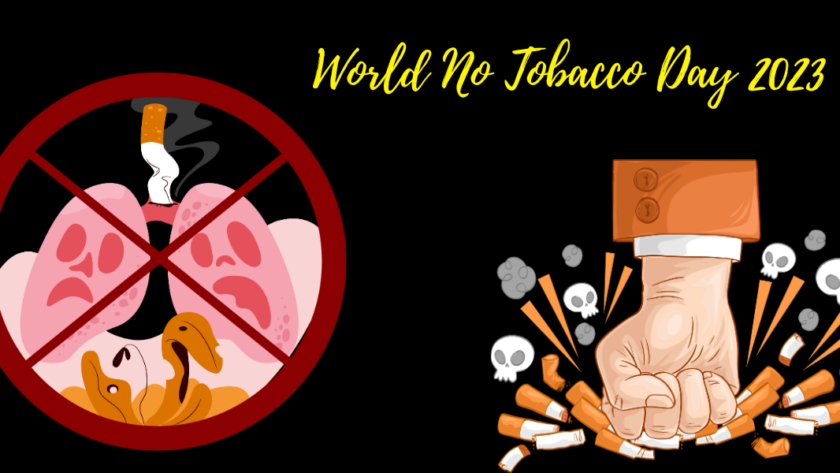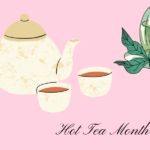[Content Note: Today’s post is about World No Tobacco Day 2023. Be advised that this post contains mention of those who have passed on, specifically from commercialized tobacco usage. If this is something you’re not in the headspace to hear, definitely give this post a miss, and go check out some of my other stuff instead. If you decide to move forward, and this brings up some difficult feelings for you, I encourage you to reach out to the peeps at the Crisis Text Line. On that note, if you’re currently utilizing commercialized tobacco products, no matter what form it’s in, reach out to your local quitline, which you can find through the CDC website.]
Today is World No Tobacco Day 2023. This observance got its start in 1988, and before I get into this any further, I need to make it clear that when I say “tobacco,” I’m referring to commercialized tobacco, not traditional tobacco. Traditional tobacco is used in ceremony for many Native American and First Nations communities, and only in ceremony since it’s sacred. It’s important to make this distinction, since commercialized tobacco is the first thing that many out there think of when it comes to the word “tobacco.”
This year, the theme from the World Health Organization is “Grow Food, Not Tobacco.” I ended up missing last year’s World No Tobacco Day, but the year before that, it was “Commit to Quit”. Many countries, especially developing countries, have taken up tobacco farming due to the profits it offers when their farmers sell it to developed countries. The tobacco industry makes it a very lucrative operation, but at what cost?
According to this post, there’s a huge price to pay. For starters, commercialized tobacco is responsible for 8 million deaths per year, and in the next breath, government agencies continue to support commercialized tobacco farming due to the powerful lobbyists in the tobacco industry.
Next is the fact that viable farmland is at a premium in many locations. Instead of being used for the tobacco industry, that farmland could be used to grow crops for the locals going through food insecurity, and help them in ways that matter. On top of taking away from already limited resources, the lucrative tobacco industry reinforces the cycle of food insecurity by giving farmers and government agencies even less of an incentive to grow other crops besides tobacco. This is also a very time-consuming crop, taking nearly a year to grow, which takes up most of the farmers’ time, making other crops less of a priority.
The same post linked above also mentions the red tape involved in growing tobacco. The tobacco industry is more than happy to supply farmers w/ the tools they need in order to grow their crops, but probably accidentally-on-purpose forget to tell the farmer that they’ll need to pay this back at the end of the year. This puts farmers in debt to the tobacco industry, and makes em even more beholden to them. If I didn’t know better, I’d think this was indentured servitude and modern-day slavery, which can’t be legal. If it is, why isn’t this against the law already? The loopholes for rural credit make it possible for these companies to keep doing this and get away w/ it.
As if the hidden costs involved in tobacco farming weren’t bad enough, it’s a buyers’ market according to that same post. The tobacco companies have a history of under-grading and lowballing tobacco farmers, when the contractors get to inflate their prices, which means the farmers are SOL.
This is what keeps farmers from making that shift toward growing crops to feed their communities, and perpetuating food insecurity at the same time, and this is what has to change.
The WHO states that a good place to start is forming local advocacy groups dedicated to moving on from tobacco farming, and moving toward sustainable farming that feeds communities and ends food insecurity. In addition, this will put a stop to the child labor involved in tobacco farming.
Another step in the right direction is financial institutions making microgrants available. This will help farmers get the funds they need in order to get their hands on supplies for growing sustainable, healthy crops for their communities. Sure, the tobacco industry does the same thing, but in this case, there’s no strings attached.
The countries that purchase tobacco from these farms are also part of the problem. But, the good news is, they can be part of the solution! Since commercialized tobacco is a buyer’s market, this means the buyers have the power to influence positive change, including supporting farmers in pursuing other means of living beyond the tobacco industry with alternative crops.
It’s a sad statement in life that a giant industry like the tobacco industry is allowed to prey on vulnerable ppl and farmers in developing countries, at an enormous cost to farmers and their families, especially their young children who often work in the fields along w/ the grown-ups.
These ppl end up getting sick, growing the raw materials for an end product engineered to be as addictive as it gets, makes the person sick, and makes everyone around them sick too in the process. According to the Surgeon General’s findings from 2020, one of the ways to make tobacco farming less of a thing is to increase the price of the end products. By increasing the prices, it makes commercialized tobacco usage more cost prohibitive, and gives more ppl currently using it an incentive to quit.
The more ppl who currently use this stuff who quit, the less demand there is for commercialized tobacco farming. The less demand for commercialized tobacco farming, the more of a demand there’ll be for these farmers to start growing other crops to serve their communities instead. There is life beyond commercialized tobacco farming, and the Luettjohann family in this post is living proof of it.
I love this story, and others like the Luettjohanns’.
Despite the tobacco industry’s collective doublespeak about going green this, social and corporate responsibility that, and protecting children blah, blah, whatever, their actions always speak louder than words. According to the WHO, this industry is responsible for 5% of deforestation, even though one of the tobacco companies claim their goal is zero deforestation.
Ohhh-kay. Sounds pretty sus to me, but what do I know? I’m just a rando blogger, haha.
The point is, the end products of commercialized tobacco farming cause nothing but misery and harm. These are products designed for addiction, stacking the deck against those who get hooked on it, and these products are completely fuckin useless. In addition to causing harm for tobacco farmers and their families, the costs involved w/ this stuff are all-encompassing, meaning: financial, health, and physical.
In terms of the financial costs, it starts w/ the industry bigwigs lowballing tobacco farmers, then it costs a fortune to buy the end products. Some will buy the stuff, no matter what it costs. I saw it firsthand. There were times where we did w/o so much, but there was literally always smokes in the house. Always. Twice-weekly midnight runs in the car w/ my mom to whatever convenience store was open so she could get her fix. On top of that, the cost of utilizing the kind that can be smoked extends to fixing the resultant property damage, w/ the ruined HVAC systems, the nicotine-stains on walls and ceilings, and ruined belongings too.
Healthwise and physically, it starts w/ the tobacco farmers and their families getting sick from tending to the crops, ending up w/ nicotine poisoning as a result. In some instances, these family members include young children, and last I checked, child labor is fuckin illegal. The ones who use the end products not only make themselves sick, but w/ the kind that can be smoked, it makes everyone around them sick too. True story, and looking back, I think this explains why I was so sick as a kid so often.
Commercialized tobacco usage killed my mom in November 2021. My grandma was right, she was one of many that day, and one of many more who’ve passed on since then due to using commercialized tobacco. How can this industry claim they’re going green, when their products kill millions of users every year?
For me, every day is World No Tobacco Day. I get to breathe clean air. Not everybody gets to do that, and up until my mom died, I was among that “not everybody.” I count clean air as one of my blessings, and knowing there’s ppl out there who don’t get that, it breaks my heart so bad. I wish I could have em w/ me.
Since the lessening demand will help make it possible for current tobacco farmers to switch to more sustainable crops and help address food insecurity in their communities, how about we help speed up the process, you and me? By not utilizing commercialized tobacco products, you’re voting w/ your dollars, investing in your future, and investing in these farmers’ futures in other ventures beyond tobacco for a shitty, two-faced industry.
I got no love for an industry that kills ppl and ruins lives. Sorry, not sorry.
Over to you, readers. What are you doing for World No Tobacco Day 2023? Is this something that hits close to home for you? Either way, I’d love to hear your thoughts and takeaways, so drop it all like it’s hawt, and let’s talk.


